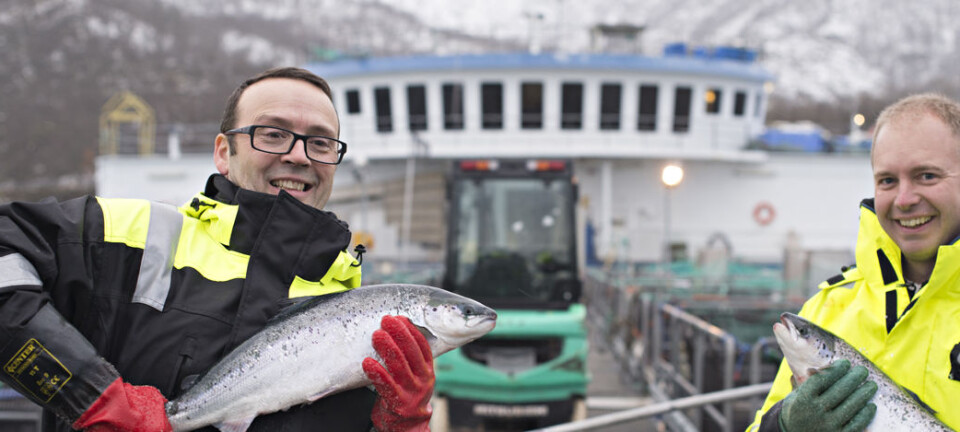This article was produced and financed by Nofima The Norwegian Institute of Food, Fisheries and Aquaculture Research - read more
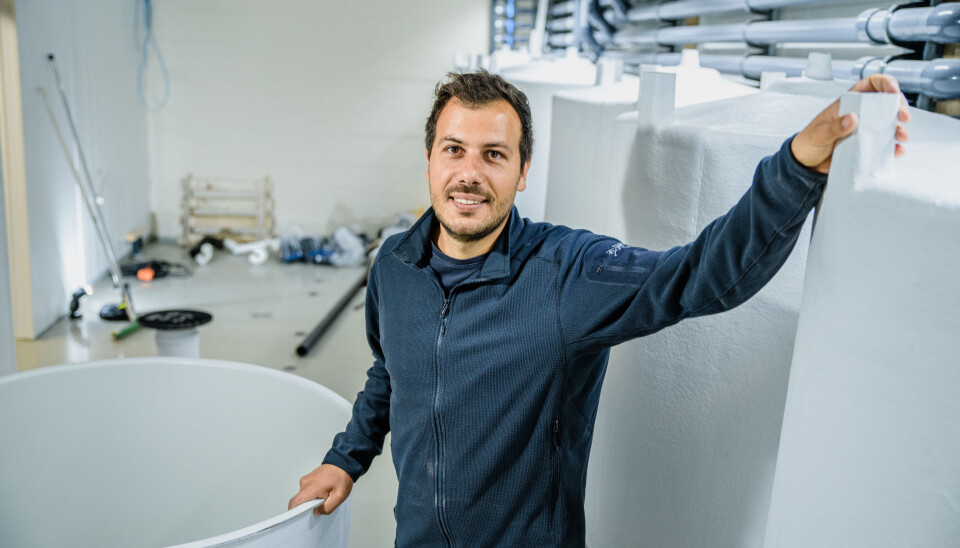
Certain that land-based fish farming is the future of the aquaculture industry
Vasco Mota from Portugal is becoming one of Norway’s foremost scientists on land-based, closed-containment aquaculture systems using recirculated water. He is absolutely certain that this technology is the future of fish farming.
344 million juvenile Atlantic salmon are produced annually in Norway, also called ‘smolts’ in the industry. According to Vasco Mota, this production is now facing a major technological shift. He believes that in the near future a large portion of salmon production, from roe to slaughter size fish, will take place in so-called recirculating aquaculture systems – RAS.
“The potential of RAS is huge. Fish cultured in RAS have one of the smallest environmental footprints in the animal food production industry", Mota says.
"Currently, its complexity and high initial cost to build are shortcomings for a wider adaption. It may take five, ten or fifteen years, but RAS technology is going to be the future. It is definitely not a question of if, but when”, he states.
Young research talent
Young Research Talent Funding granted to talented young researchers by the Research Council of Norway aims to support researchers who are at an early stage in their careers, and who have shown the ability to carry out research of high scientific quality.
The 34-year-old at Nofima has now been designated as ‘Young Research Talent’ by the Research Council of Norway, and has received almost NOK 8 million to further develop a small part of future technology within the field of aquaculture: disinfection, in his project called RASHealth.
Contributing to fish welfare
With funding in place and nine brand new RAS units in the fish health laboratory at the Aquaculture Research Station in Tromsø, Vasco Mota is ready to help take RAS technology one step further.
“RAS is extremely bio-safe. Everything that goes in and out is sterilised and checked, and there is little chance of infection entering the system”, says Vasco Mota.
However, developing RAS also presents new challenges, such as how to disinfect the water without negatively affecting the health and welfare of salmon, and biofilter performance. More knowledge is required in order to gain a more effective and operational disinfection strategy.
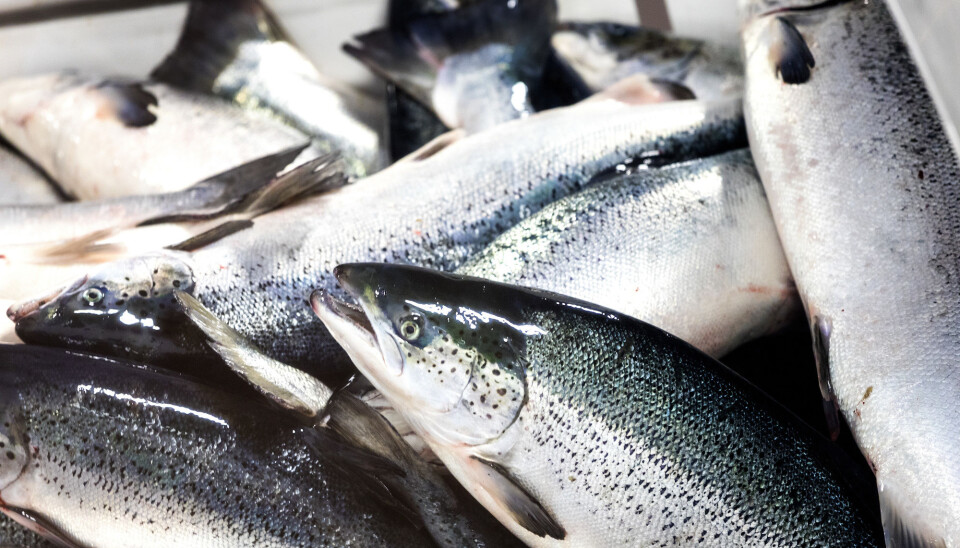
Mota and his Nofima colleagues, together with partners at the Norwegian University of Science and Technology (NTNU) in Trondheim and the National Institute of Aquatic Resources (DTU Aqua) in Denmark, are at the forefront of international research regarding this area.
The research project he leads is expected to contribute to the standardisation of water disinfection and have an impact on how RAS facilities are designed and will perform in the future. By developing a food production system that produces nutritious food in an efficient way while simultaneously improving the health standards of fish production, RASHealth will also contribute directly to sustainability in Norwegian aquaculture.
Effective methods for pathogen control and water treatment
The Nofima scientist is now in full swing designing and following up the construction process of a further new RAS facility comprising over 20 units at the Aquaculture Research Station, which Nofima co-owns with the University of Tromsø. Experimental facilities are now taking shape, which, until now, have been lacking in Northern Norway.
“Raising fish in RAS is very different from traditional systems such as sea-cages or land-based flow-through systems. Because the water is recirculated, bacteria, viruses, and fish metabolites can accumulate. Therefore, water treatment is a key part in these systems. The newly built RAS units will allow us to do research with pathogens in RAS”, he says.
In order to develop new disinfection strategies, a number of trial fish must be infected with bacteria and viruses. This will allow scientists to find the most effective methods of treating the pathogens and water.
Before joining Nofima in Tromsø, Vasco Mota was employed at Nofima’s Sunndalsøra branch for two years. This was at the Research Station for Sustainable Aquaculture, which has been the focal point of much of the development in the Norwegian aquaculture industry for almost 50 years.
Nofima’s Centre for Recirculation in Aquaculture (NCRA) is also located at the same station. The centre was built in 2010 and is equipped to test technology and study farmed fish in future aquaculture systems.
“I had the pleasure of working with Bendik Terjesen, Steve Summerfelt and several other highly skilled Nofima scientists at CtrlAQUA, which is a centre for research-based innovation and an important part of Nofima. At CtrlAQUA, I worked a lot with CO2 in RAS and fish tank hydrodynamics and impact of environmental factors on biofilters”, he explains.
“I wanted to save the world and all the species”
But how does a young man from Portugal’s capital Lisbon become interested in fish farming, and end up at a research institute located way, way north?
Well, he watched hours and hours of documentaries about wildlife and nature on the BBC. That interest led to bachelor studies in environmental biology.
“I wanted to save the world and all the species”, laughs the scientist.
But since there are few people that get the privilege of making good money travelling around the world with a TV company trying to save animal species, Vasco Mota’s interest slowly turned to something more realistic such as a future professional career: fish farming. He then completed a master’s degree in aquaculture and fisheries at the University of Algarve in Portugal.
During the first year of his master’s degree, Vasco’s future career was decided.
“We were tasked with creating a production plan for a flatfish called turbot. In connection with this, I came into contact with RAS for the first time and became both interested and fascinated”, says the scientist.
When enthusiastically embarking on the task of creating a plan for how the fish could be farmed using RAS, he received a lot criticism.
“Many people told me that I should just forget about it. They said that these types of systems would never be applicable in commercial fish farming”, says Vasco.
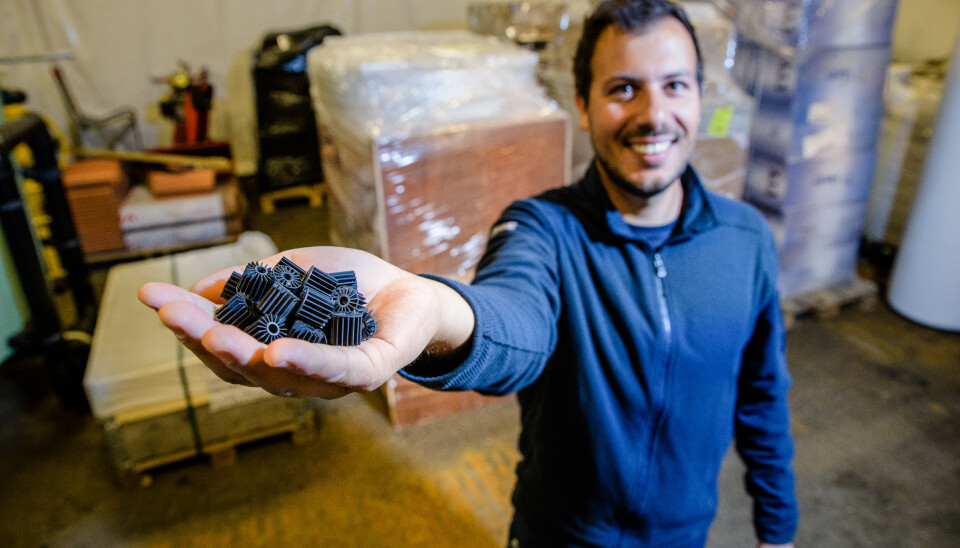
Potential – and many challenges
The Erasmus Programme is an exchange programme for students in the EU and EEA. After receiving an Erasmus scholarship, Mota started the second year of his master’s degree in Wageningen University in the Netherlands, where he wanted to prove the critical voices wrong. Therefore, his master’s thesis also focused on turbot and the possibility of farming the fish in RAS facilities.
“Great potential for growth. But still a lot of challenges”, he summarises.
When he started his PhD in 2010, he still believed in the development of RAS technology. His doctoral work concentrated on one of the many challenges in the development of the technology: substance accumulation in the reused water. ‘Steroids accumulation in RAS’ is the academic title of his doctoral thesis, which was completed in 2015.
“I was lucky to work with knowledgeable and experienced supervisors namely Ep Eding, a RAS expert and researcher at Wageningen University & Research (WUR) as well as Catarina Martins, a fish welfare and RAS expert, nowadays Chief Technology and Sustainability Officer at Mowi. They gave me the inspiration, ideas and confidence to focus my career on RAS”, says he says.
In love with the northern lights
The starting point would be at Nofima in Tromsø and the Aquaculture Research Station in Kårvika. After leaving CtrlAQUA and spending a year travelling with his fiancée Cassandra Roberts from England, Mota was by no means finished with RAS technology. At Nofima’s Tromsø branch, he found an opportunity to continue developing the technology in a pathological RAS facility that he built from scratch, and in a new, large single-RAS facility that is under construction. In the latter, the salmon will live in a RAS facility until they reach their slaughter weight.
“Cassie fell in love with the northern lights, so we will probably be staying in the north for quite some time”, he says confidently.
He and his fiancée are now established in the Arctic city and on 3 May, when Northern Norway was in the last throes of winter, Cassandra and Vasco’s son was born. A bouncing little Tromsø boy who has been given the Norwegian name of Finn.
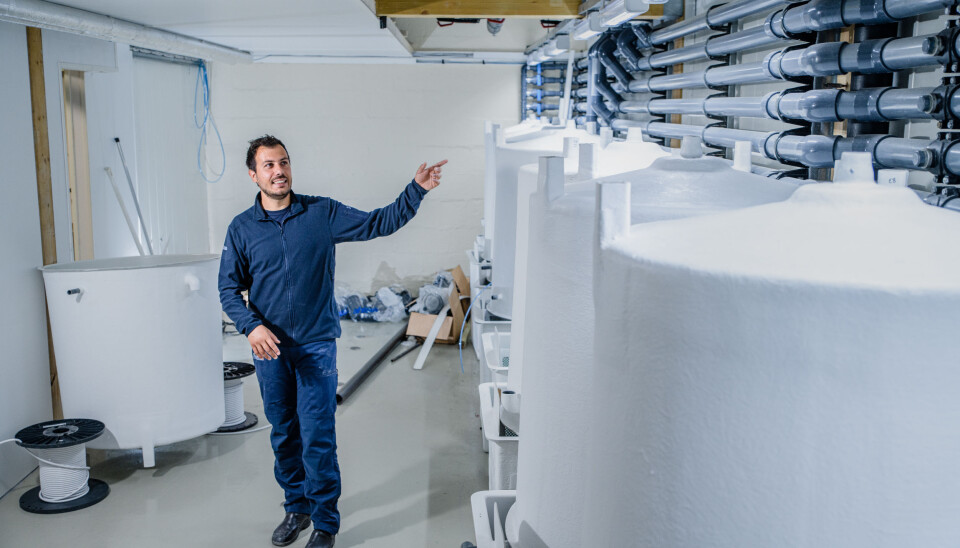
Costs are about to fall
Vasco Mota sees it as inevitable that the salmon production will be ashore in a future perspective.
“For Norwegian production companies, at a first glance, it may appear that it will lose its economic advantage of producing Atlantic salmon, which is the sea cage production in the calm water of Fjords. However, there is an ongoing transition of exporting mainly salmon to exporting RAS technology as well as an array of aqua services”, says Mota.
He refers to what he calls a major boom now on developing new RAS for the future.
“And we have already come so far in the development of RAS facilities that costs are falling. More companies will be able to afford to use the technology, and it can be implemented anywhere, you only need access to high quality water”, he explains.
Mota believes the next ten years will be crucial for the internationally renowned Norwegian farmed salmon, in relation to the market.
“Consumer perception of Atlantic salmon production will need to shift as well. From highlighting production in pristine landscapes, to highlighting local and lower environmental foot-print impact in indoor production facilities inland. Perhaps some people will think that fish produced in RAS facilities result in inferior products, but that really is not the case. The fish is a premium product even though it has been in a RAS all its life”, he says.
He points out that a large RAS farm is now being built right in the middle of the Netherlands. In addition, there are approximately ten countries around the world that have already started production of Atlantic salmon using RAS. EU countries such as Denmark, Poland and France; The United States; China and Canada are among them.
“Even the landlocked nation of Switzerland produces salmon in RAS”, says the RAS scientist.
Great responsibility
He has found a scientific community at Nofima where he can follow and contribute to the development.
“I know what my goal is: to develop RAS technology as far as I can. The working environment at Nofima provides me with the room to do that”, he says.
The RASHealth project he now leads will continue until 2023. Vasco Mota is also involved in several major RAS technology projects at Nofima. He expects he will have plenty to do in the future and is feeling the responsibility.
“It is a great responsibility managing millions of public Norwegian kroner in research projects. Those who give you the money expect great results", he says.
"But neither RASHealth nor the other projects are one-man shows. As the project manager, it is my role to keep everyone motivated and focused on delivering high impact research. It can be demanding, but when you get to work on good research that others can benefit from, it’s very rewarding”, says Vasco Mota.
———










